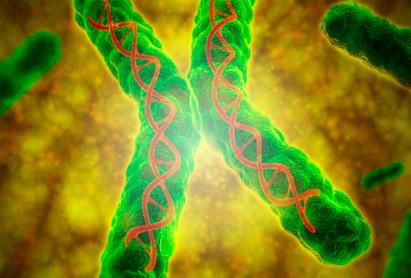Magnetic bead method was used to extract DNA from different organisms, cells and bacteria
Nucleic acid extraction is a diverse biological process that enables us to gain insight into basic research and clinical applications. DNA isolation (and RNA isolation) is the first step in many modern genomics techniques and applications, both animals and bacteria involving DNA extraction.
Cultured mammalian cells and tissues
Treating cultured cells with osmotic shock or detergents is relatively easy to lyse, whereas isolation of DNA from tissues requires the breakdown of the extracellular matrix, not just the cell membrane. This typically requires homogenization followed by silica column or magnetic bead-based purification, or the less favorable phenol-chloroform extraction.
The use of formalin-fixed paraffin-embedded (FFPE) tissue is common in clinical applications and in some studies. It is great for preserving tissue structure, but can introduce a variety of DNA damage with far-reaching effects. That said, since the quality of the isolated DNA directly affects the test results, positive samples may be overlooked due to poor extraction.

DNA extraction from blood
One challenge of DNA extraction from blood is the variability in DNA quantity depending on blood fraction. Red blood cells do not contain DNA, so there is much less per cell in whole blood than in buffy coat or bone marrow-derived fractions.
Blood clotting also presents challenges: clotting can prevent efficient sample digestion, and some anticoagulants can interfere with PCR amplification.
DNA extraction from bacteria
There are differences between Gram-positive and Gram-negative samples when DNA is extracted from bacteria. Gram-positive samples often require lysozyme treatment to digest higher levels of peptidoglycan in the cell wall, while for Gram-negative samples, simple osmotic shock may be sufficient.
Both types of DNA are unlikely to be scarce, and rapid methods such as alkaline extraction and diatomaceous earth are often used to extract DNA. Both methods are reliable, but alkaline extraction by itself may not provide the highest purity, and diatomaceous earth can be costly.
Magnetic bead method for DNA extraction
Because of their versatility and ease of use, magnetic beads provide an excellent alternative to traditional isolation and cleanup methods. They do not require additional centrifugation of samples that may have been agitated, increasing the likelihood of recovering larger fragments, and can be scaled up for higher binding capacity than columns.
Professional manufacturer of Nucleic Acid (DNA & RNA) Extraction and Analysis products Magnetic Beads supplier
GENETURE is a group company,we own two factories: Ascend and Dianrun,to provide one stop solution of Nucleic Acid Extraction and Analysis,including solution for COVID-19. Geneture provides high quality and professional Nucleic Acid Extraction Reagents, Lab consumables, Real-time PCR consumables and test machines.
GENETURE main products including: Nucleic acid extraction or purification kit,Automatic nucleic acid extractor, PCR system, PCR kit, Magnetic beads, and lab consumables of 96 well deep plate,Magnetic rod comb,PCR tube,PCR plate,Pipette tips,centrifuge tubes.
Geneture provides one stop solution of Nucleic Acid Extraction and Analysis. Feel free to contact us.
Email: info@geneture.com
Mobile: +86 150 1002 8687
